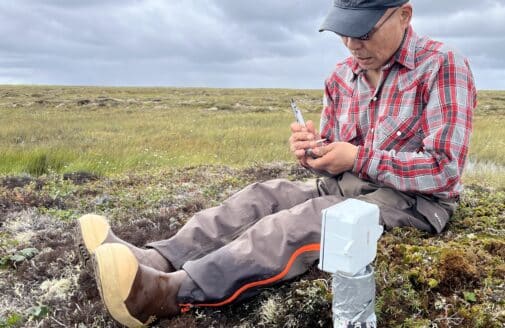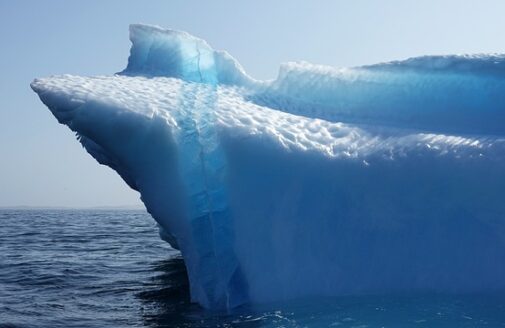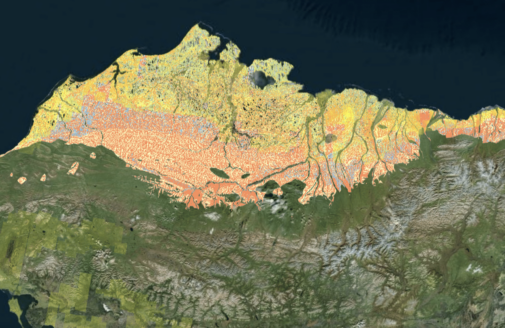Arctic issues gain traction at COP27
Woodwell’s leading cryosphere scientists advanced global recognition of permafrost thaw and related impacts at this year’s climate conference
photo by Kiara Worth, UNFCC
Amid the desert surroundings of this year’s UNFCCC Conference of the Parties (COP27) in Egypt, Woodwell scientists called out the urgent climate crisis in the Arctic, which is impacting both local communities and the entire planet. 82% of climate models in use by the Intergovernmental Panel on Climate Change (IPCC) do not represent carbon emissions from thawing permafrost. As a result, the world’s policymakers are underestimating how aggressively we need to reduce fossil fuel emissions to avoid the worst consequences of climate change.
At COP27, a team from Permafrost Pathways was pushing to highlight permafrost thaw within the greater discourse and amplify the voices of Northern communities who are being most impacted by rapid Arctic warming. Although action at this year’s conference was slow in getting off the ground, cover decision, and other outcomes built on this momentum with new declarations to step up mitigation, as well as pledges for loss and damage funding.
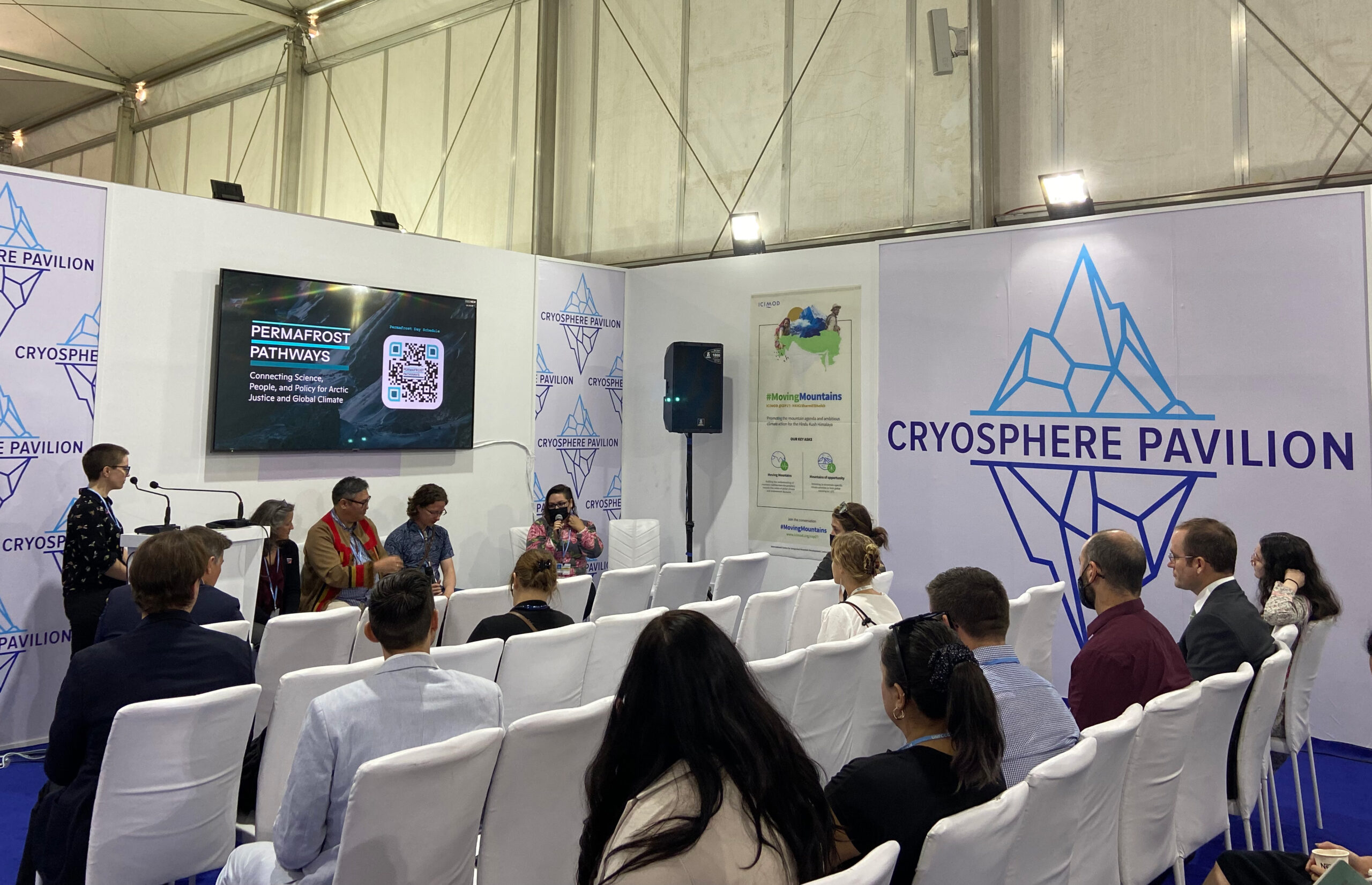
Panelists from the session “Co-producing adaptation strategies to the climate crisis in the Arctic” during Permafrost Day in the Cryosphere Pavilion.
photo by Melissa Shapiro
Declaration for Ambition on Melting Ice
Among the key developments for the cryosphere at COP27 was the launch of the Declaration for Ambition on Melting Ice (AMI)—a statement from 19 governments demonstrating commitment to keep the goal of 1.5 degrees of warming alive to limit substantial losses in the cryosphere. Led by Iceland and Chile, with support from ICCI as Secretariat, this high-level group represents a broad coalition of countries elevating melting sea ice, glaciers, and thawing permafrost as urgent issues that must be addressed by political leaders and the public both within and beyond the mountain and polar regions.
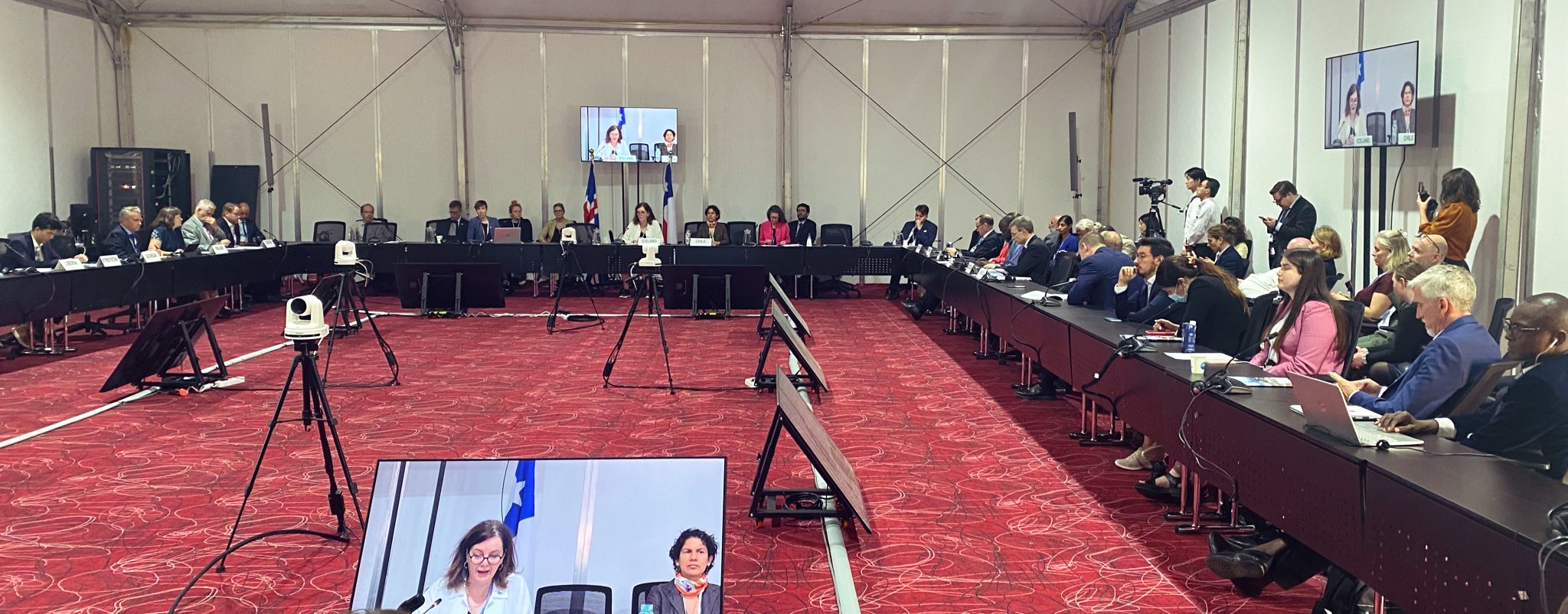
Launch event announcing the Declaration for Ambition on Melting Ice at COP27.
photo by Rachael Treharne
Following the publication of the Special Report on Ocean and Cryosphere in a Changing Climate and ICCI’s 2022 State of the Cryosphere Report, the AMI Declaration helps to raise the visibility of the cryosphere in climate negotiations. It also reinforces the need to include mountain countries with significant glaciers, as well as low-lying and island countries that stand to be impacted by rising seas, in the conversation.
“It’s really exciting to see this come together and to see quite a few countries signing on to this declaration recognizing that this is an issue,” said Dr. Rachael Treharne, research scientist at Woodwell and Arctic policy lead for Permafrost Pathways. “It’s also nice to see so many of the AMI coalition members highlighting both the fact this is already something that is really important for communities living within cryosphere regions, including within the Arctic—particularly for Indigenous Peoples, but also that this is something that is globally important with some very direct impacts for communities worldwide as well.”
The founding of the AMI may yield coordinated interventions at future UNFCCC negotiations, improved alignment in national policy, new and strategic research approaches, and increased visibility of permafrost thaw among global scientists and policymakers.
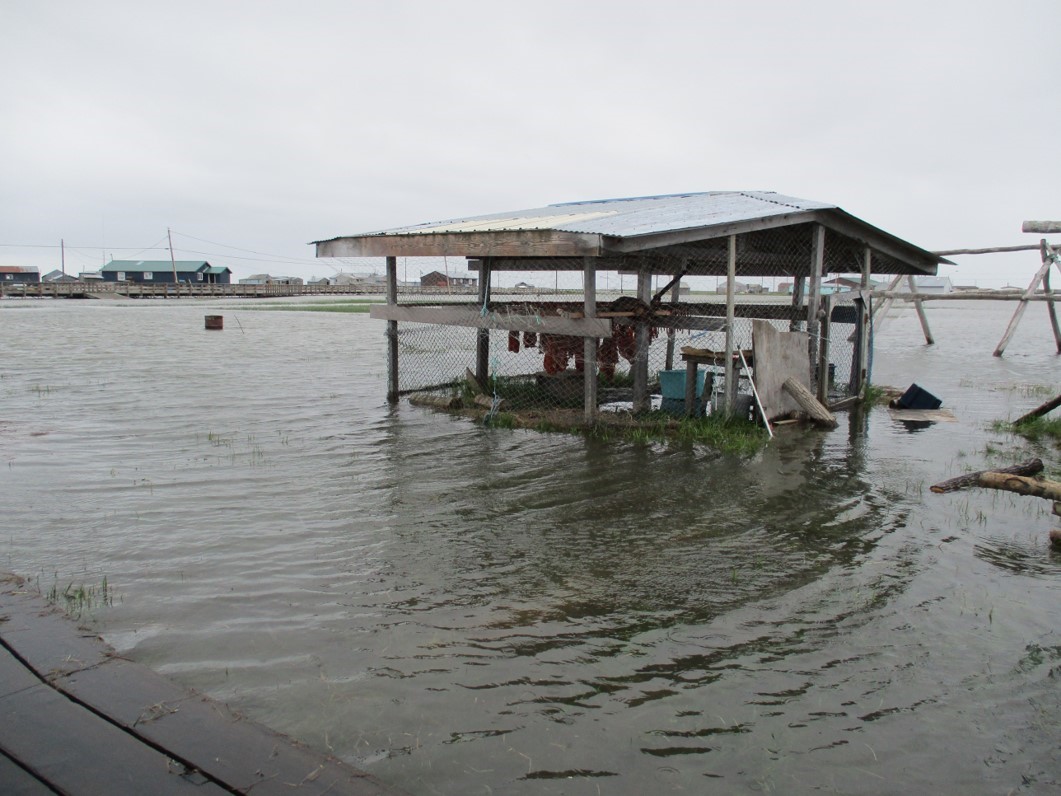
Non-storm event flooding that damaged a subsistence drying rack in the Alaska Native village of Kuigilnguq (Kwigillingok).
photo by Ben Baldwin, Alaska Institute for Justice
Loss and damage discourse
“Loss and damage” was a consistent refrain at this year’s climate conference— referring to the destructive impacts of climate change that have already occurred or can no longer be avoided. Worldwide, Indigenous Peoples, as well as women and youth, bear a disproportionate burden of loss and damage and representatives of these groups were pushing for compensation from top-emitting countries. In the Arctic, both economic loss and damage, relating to livelihoods and property, and non-economic loss and damage such as loss of life, biodiversity, and cultural heritage, are accelerating due to permafrost thaw and related impacts. Yet, Indigenous Peoples living within national borders of developed Arctic States are rarely represented or visible in the UNFCCC loss and damage discourse.
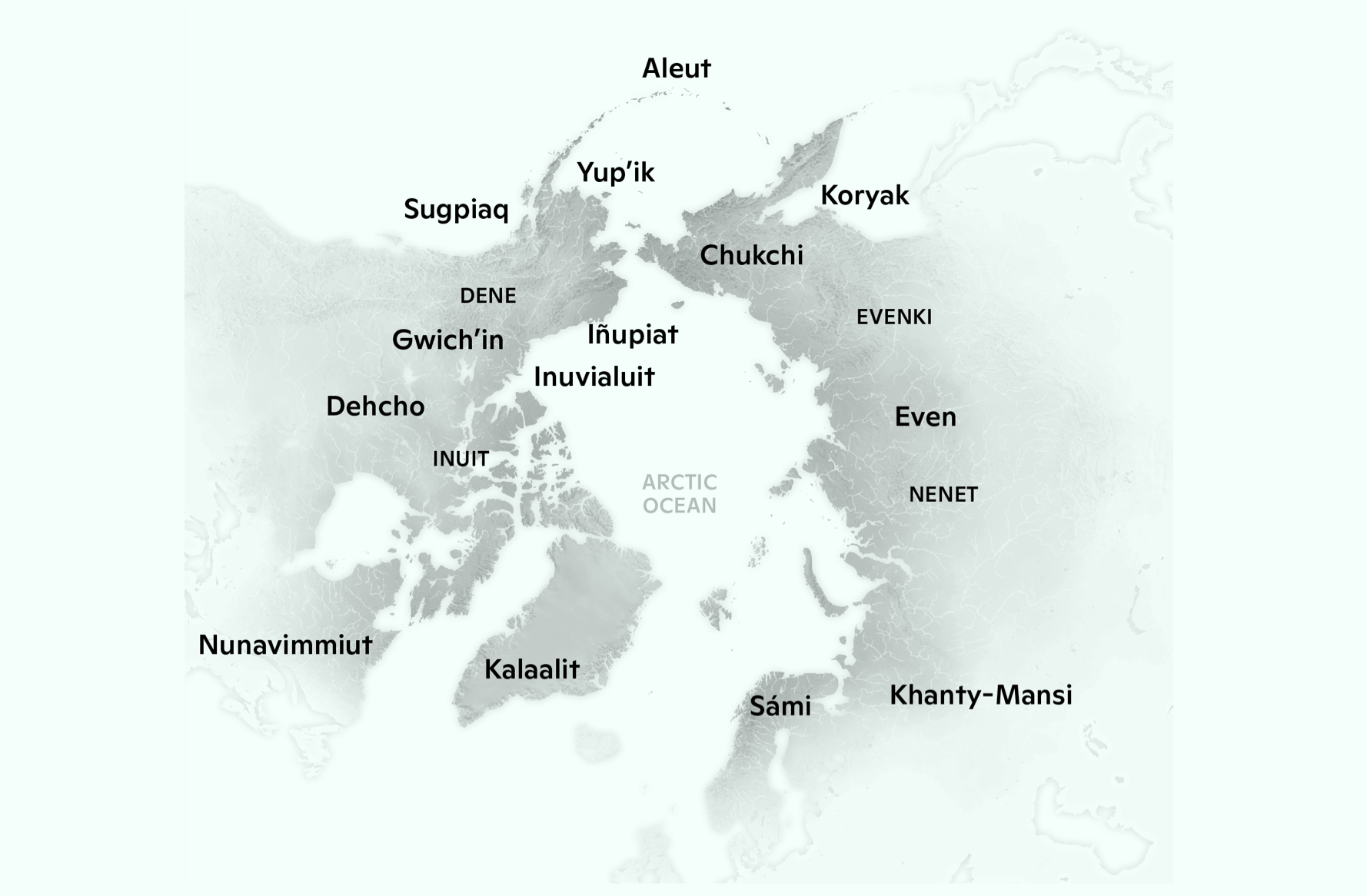
Indigenous Peoples across the circumarctic.
map by Carl Churchill
Historically, loss and damage has been a thorny issue in UNFCCC negotiations. At COP27, action to address loss and damage was expected by many to be a litmus test of success, after coordinated pressure from across civil society secured a spot for the issue on the official agenda. After a difficult process that continued well beyond the planned end of the conference, an historic agreement established a loss and damage facility. While the agreement is far from perfect, it’s an astonishing step forward brought about by civil society action. Now, a difficult road lies ahead for implementing the fund, as well as making sure all impacted communities are brought to the table, including Arctic Indigenous Peoples. Furthermore, while reparations and the loss and damage fund are long overdue, more needs to be done to prevent climate harm and devastation from happening in the first place.
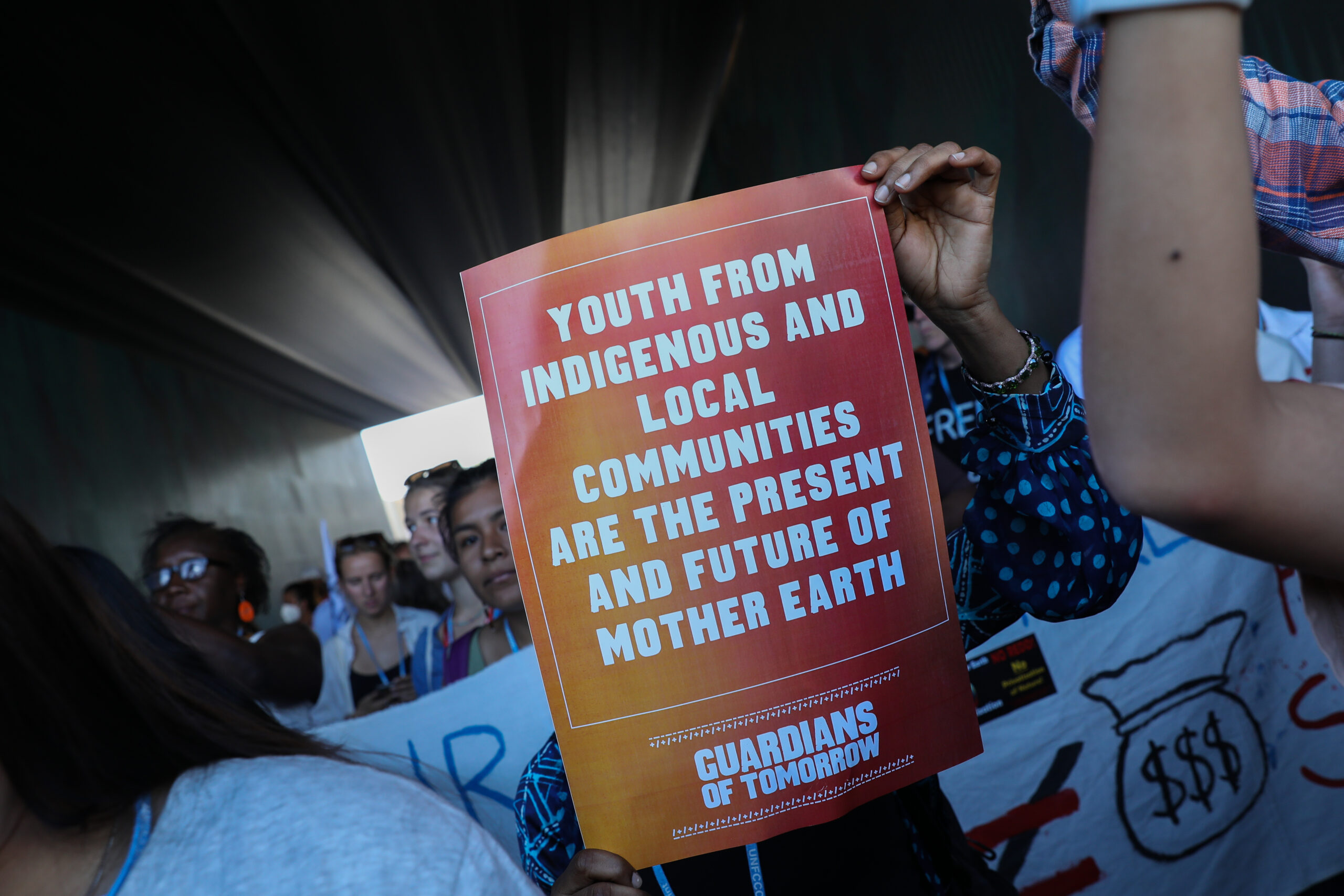
photo by Kiara Worth, UNFCCC
Hope for the future
Although COP27—like many conferences before it—did not fully capitalize on opportunities to avoid a worst-case climate scenario, Woodwell is keen to recognize steps forward. Permafrost Pathways, and many others working on Arctic and cryosphere issues, continued to inform decision-makers about the urgent need to address a warming Arctic, through events like Permafrost Day. Permafrost Pathways also supported the voices of Indigenous communities that are disproportionately impacted by permafrost thaw in ongoing discussions about Loss and Damage, adaptation, mitigation, and co-production of knowledge. And, thanks to new relationships and understandings gained at COP27, the Permafrost Pathways team is even more prepared to promote accurate global accounting of permafrost carbon emissions and to advocate for policy solutions that build on the momentum gained this year.
Story includes contributions from Melissa Shapiro and Rachael Treharne





